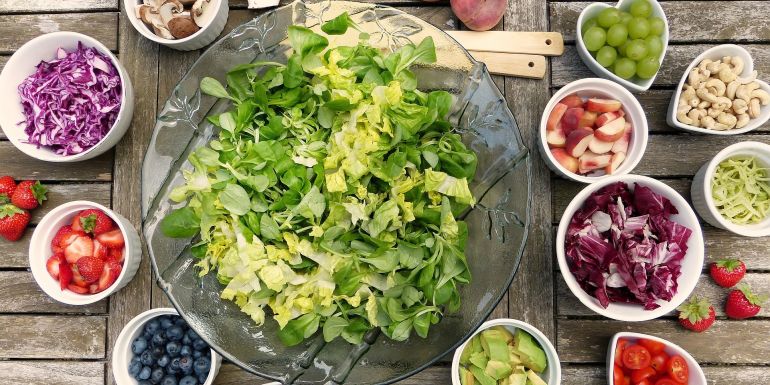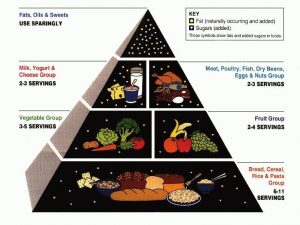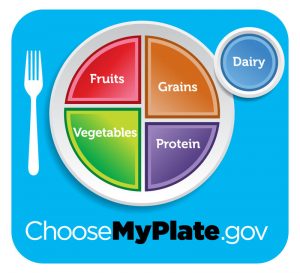News

Nutrition Tips for Busy Families
The typical family in the US looks quite different today than it did 30 years ago. School, sports, church, clubs and activities, and longer work hours have changed the way we allocate our time as well as how we eat. With families getting busier and busier, how do you make healthy eating a priority? It’s actually pretty easy!
New Look/Old Concept

Grains were depicted as the largest food group, taking up the most room on the pyramid. We were encouraged to eat 6-11 servings a day! Dairy and meats comprised less than ¼ of the recommended foods. Today, the food pyramid has been completely reworked to now look like this:

Gone is the illustration that suggested one food group was more important than another. New guidelines encourage a balanced plate of food and help users visualize what their actual plate should look like. Here are some simple tips for busy families to follow to achieve balanced nutrition.
Make a Meal Plan
Sit down with your family and brainstorm some meals that everyone likes. After you have a good-sized list of family favorites, make a menu of what you are going to make for dinner this week. When you go grocery shopping, buy only the items you need to make these dinners and stick to it. Not only will this cut down on making multiple trips to the grocery store each week (who has time for that?) but it also allows you to plan a balanced meal and ensures you have the ingredients to keep it balanced. Fewer trips to the store also means less money spent on impulse items!
5 Food Groups & Being Sneaky
Instead of placing a greater emphasis on one type of food, like in the old food pyramid, the United States Department of Agriculture now encourages an almost even distribution of food groups. Fruits, vegetables, grains, protein, and dairy should be nearly equally represented on your plate. Have a picky eater who just will not eat veggies? Sneak them in! Grate carrots to include in your lasagna sauce or throw a handful of spinach leaves in your child’s breakfast smoothie. Be creative to keep that plate a balanced one.
Meal Prep = Saved Minutes
The number one excuse busy families make for not eating healthy is that it takes too much time to cook at home when they need to be on the go. It’s just easier and faster to grab a meal in the drive-thru versus making one in the kitchen. That doesn’t have to be so! When you make your week-long meal plan, you can choose the amount of time you can allot to meal prep. Don’t choose labor-intensive meals when you have a short window of time to cook and eat. Also, set aside a couple hours on the weekend and prep as much of the meals as you can for the week. Grill all the chicken you need at one time. Chop all the vegetables for the week and measure them out into baggies for each recipe. Portion out healthy snacks for the week so they are quick to grab on the way to the next activity. By spending a small amount of time planning ahead for the week, you will save yourself from bad food choices when you are at your busiest (and hungriest).
Creativity is Key
Food boredom is real. We are all guilty of saying “nothing looks good to eat” when we stare mindlessly into the pantry or refrigerator while searching for a snack or trying to figure out a meal. To keep a busy family from getting bored of eating the same old stuff, be creative with your meals! And being creative doesn’t have to mean making flower shaped sandwiches or taking extra time to cook. Creativity is as simple as a Google search for “Grab and Go Breakfasts” or “Quick Healthy Meals.”
Eating healthy doesn’t have to be out of reach for a busy family. By following these very basic and very simple tips, you can cook up a balanced plate of food for your loved ones each week. Your waistband and your wallet will both thank you for adopting some new nutrition habits. Your friends at your favorite fast food drive-thru may miss seeing you everyday, but you can always stop by and drop off a healthy snack to share.